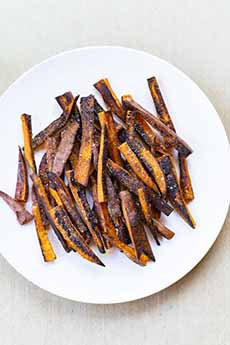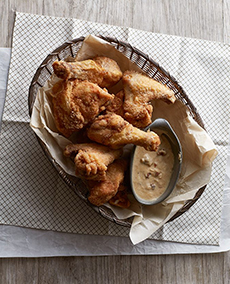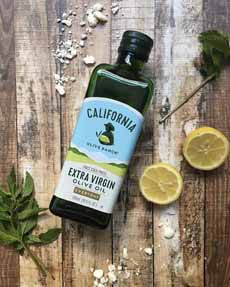TIP OF THE DAY: Deep Fat Frying In EVOO
|
Deep frying occurs when the fat in a pot or pan completely envelops the food. You may have read tips on deep frying that advise against cooking with extra virgin olive oil. The advice is that the smoke point is too low. But that’s not so, says California Olive Ranch, producers of fine EVOO in “everyday,” single varietals and reserve blends. Every oil has a temperature at which it begins to break down, referred to as the smoke point. It’s a common myth, says California Oil Ranch, that olive oil has a low smoke point that renders it inadequate to deep fry with. It’s also a myth, they say, that oil needs to reach extreme temperatures in order to fry food. In many regions around the globe, cooks have long been frying with extra virgin olive oil. We always fry our morning eggs in EVOO, but that’s not the same as deep frying. So we pass along to you California Olive Ranch’s tips for frying in EVOO. But first, let’s start with a tip from us. EVOO is costlier than regular olive oil and other oils used to deep fry: canola, sunflower and vegetable, for example. And single varietal EVOO and reserve blends are even pricier. We wouldn’t normally recommend that you use a pricey bottle of EVOO to fry. But there are less expensive “everyday” EVOO blends. Or you might end up with too much EVOO, or EVOO that’s been on yourself for too long (friends typically gift us with fine olive oil, and sometimes we can’t use it fast enough). Of course, you want to use it up before it goes rancid (a sniff will tell you if that’s about to happen—or already has happened*). While different olive cultivars have a longer or shorter freshness timeline, all olive oil should be good for two years from bottling. If your bottle is older than two years, get ready to fry. And a reminder: All cooking oils should be stored in a cool, dark place, away from light. In order to deep fry food, the oil must reach a temperature that: In sum: Not only does extra virgin olive oil stand up to the task of high heat cooking, it also aids in bringing out the flavors of your dish—in a more healthful way. TRIVIA: Both olive oil and wine are fruit juice—pressed from fresh fruits. |
|
|
|
________________________ *How to tell if your olive oil is over the hill: Pour a bit of room temperature oil into a small cup or 1/4 cup measure. Place your hand over the cup to trap the aroma, and sniff. If it smells musty or like fermented fruit, it’s rancid. If it smells normal to you, you can next do a small taste test. Slurp a teaspoon of oil into your mouth and slosh it around. If it tastes good to you, it’s good to use. By the way, if it smells and tastes redolent of olives, it’s fresh.
|
||





